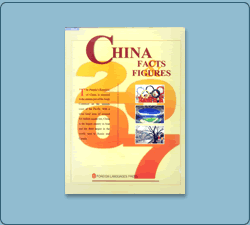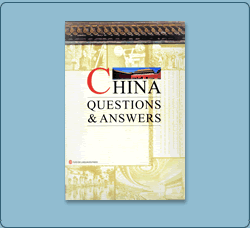|
China adheres to the policy of expanding common interests with the world's major countries and resolving differences in a proper way, based on the Five Principles of Peaceful Coexistence.
China and US
In 2006, Sino-US relations moved steadily forward. In April, President Hu Jintao paid a state visit to the US. Leaders of both countries agreed to view and handle bilateral relations from a strategic height and long-term perspective and boost the constructive and cooperative relationship between the two countries in the 21st century. This visit accomplished the goal of strengthening dialogue mechanism, expanding common understanding, increasing mutual trust and deepening cooperation. In his welcoming remarks, for the first time, US President George W. Bush used the term “stakeholders” when referring to China-US relations and pointed out that the two nations shared many strategic interests. In July and November, President Hu met with President Bush in St. Petersburg, Russia and Hanoi, Vietnam respectively and achieved positive results. In addition, they often communicated by telephone about key international issues. Apart from presidential meetings, Guo Boxiong, vice chairman of the Military Commission of the Central Committee of the CPC paid a visit to the US in July; US Secretary of the Treasury Henry Paulson, Secretary of State Condoleezza Rice, Secretary of Commerce Carlos Gutierrez, former President George Bush and Secretary of Energy Samuel Bodman visited China successively. China and the US held the third strategic dialogue in Beijing. Sino-US cooperation in economy and trade thrived rapidly. The US has become China's second largest trade partner and China has become the third largest trade partner of the US. The two sides launched the strategic economic dialogue mechanism for the first time in December. As for military cooperation, the naval fleets of the two countries exchanged visits and the navies conducted two maritime search and rescue exercises, marking the first joint military exercise between the two navies. China and the US have maintained effective communication and cooperation in a wide range of fields, such as counter-terrorism, non-proliferation of weapons of mass destruction, energy security, environmental protection and epidemic prevention. The setting up of the strategic cooperation framework and widening cooperation indicate that Sino-US relations are moving toward maturity.
President Hu Jintao meeting with US President George W. Bush during the 14th APEC Leaders’ Meeting, Hanoi, November 19, 2006
China and Russia
The year 2006 marked the 10th anniversary of the establishment of Sino-Russian strategic and cooperative partnership and the fifth anniversary of the signing of the Treaty of Good-Neighborliness and Friendly Cooperation between the People's Republic of China and the Russian Federation. The friendly cooperation between the two countries reached an unprecedented peak. Under the proposal of the Chinese and Russian heads of state, the two sides decided to launch the Year of Russia in China in 2006 and the Year of China in Russia in 2007, broadening the prospects for Sino-Russian strategic and cooperative partnership. The four meetings between President Hu Jintao and President Vladimir Putin within 2006 raised the political mutual trust and pragmatic cooperation between the two countries to a new level. Sino-Russian economic and trade cooperation progressed rapidly. The total trade volume between China and Russia in 2006 topped 30 billion US dollars. Bilateral pragmatic cooperation was greatly boosted by a number of activities, including the Sino-Russian CEO Summit, Russian National Exhibition, Russia Federal Okrugs (districts) in China and Sino-Russian Investment Promotion Week. From March 26 to 28, 2007, Chinese President Hu Jintao paid a state visit to Russia. During the visit, he attended the opening ceremony of the “Year of China,” and held talks with Putin. The two countries signed a joint statement and a number of cooperation agreements.
China and EU
In 2006, relations between China and the European Union grew more and more mature and pragmatic and their all-round strategic partnership continued to deepen and expand. On September 9, 2006, Premier Wen Jiabao, Finnish Prime Minister Matti Vanhanen, whose country was holding the EU presidency, and EU Commission President José Manuel Barroso attended the ninth China-EU Summit in Helsinki, Finland. At the meeting, China and EU agreed to launch negotiations on a new partnership pact, reflecting the true magnitude of China-EU all-round strategic partnership. At the following sixth Asia-Europe Summit, Premier Wen Jiabao brought forth the proposal for promoting Asia-Europe dialogue on the basis of equality and pragmatic cooperation and announced that China would host the seventh Asia-Europe Summit in 2008. China-EU relations kept improving, featuring increased mutual trust and frequent high-level visits. In May, Wu Bangguo, Chairman of the Standing Committee of the National People's Congress of China, visited Romania, Moldova and Greece; in September, Premier Wen visited Finland, the UK and Germany; between late October and early November, Jia Qinglin, Chairman of the CPPCC, visited the UK, Lithuania, Estonia and Ukraine; during the year European leaders, such as German Prime Minister Angela Merkel, former French President Jacques Chirac paid visits to China; high-ranking officials of the EU Commission, EU Council and EU Presidency country also visited China one after another. The EU's three major organs — the EU Commission, EU Council and European Parliament — issued a succession of reports or policy documents addressing their relations with China, unanimously highlighting the development of the EU-China all-round strategic partnership. China-EU economy and trade maintained rapid growth momentum. The bilateral trade volume between China and EU in 2006 totaled 272.3 billion US dollars. The EU has remained unchanged as China's biggest trading partner and China as the EU's second largest.
China and Japan
The year 2006 marked a turn in Sino-Japanese relations. The two countries proceeded from the interests of all and grasped opportunities to pull their political relations out of the doldrums. On October 8, 2006, the new Japanese Prime Minister Shinzo Abe made China his first foreign visit destination, no more than two weeks after his inauguration, the first Japanese Prime Minister to do so since the WWII. On November 18, President Hu Jintao met with Prime Minister Shinzo Abe during the 14th Asia Pacific Economic Cooperation (APEC) Leaders' Informal Meeting in Hanoi, Vietnam. On December 26, President Hu held a meeting with Yohei Kono, Speaker of the House of Representatives of Japan and Chairman of Japan Association for the Promotion of International Trade. Sino-Japanese trade volume reached new glory by exceeding 200 billion US dollars in 2006. The Chinese Culture Festival held between November and December in Japan enhanced the understanding and friendship between the peoples of China and Japan and preluded the 35th anniversary of the normalization of Sino-Japanese diplomatic relations in 2007.
|





